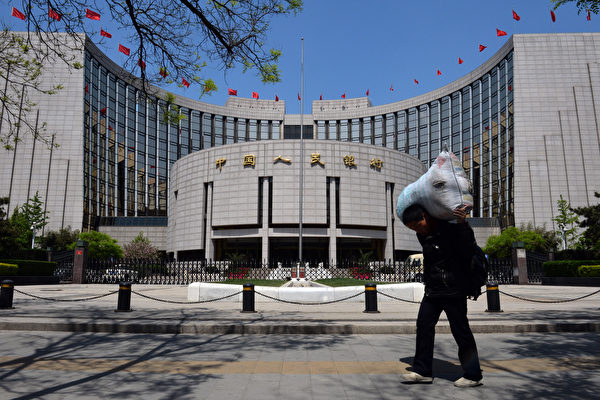On May 15, the People’s Bank of China announced the first reduction of the reserve requirement ratio for financial institutions within the year by 0.5 percentage points. This move is expected to release about 1 trillion yuan of long-term liquidity to alleviate the downward pressure on the economy. However, industry insiders have warned that large-scale “flooding” could exacerbate the risk of inflation and further dilute the wealth of the people.
According to the report by the “New Beijing News,” the market witnessed the first reserve requirement ratio cut of the year on May 15. According to the central bank announcement, starting from May 15, 2025, the reserve requirement ratio for financial institutions will be reduced by 0.5 percentage points (excluding financial institutions that have already implemented a 5% reserve requirement ratio), and the reserve requirement ratio for auto finance companies and financial leasing companies will be reduced by 5 percentage points.
Experts generally believe that there is still room for further reserve requirement ratio cuts within the year. Lian Ping, chief economist at the Guangfa Securities Industry Research Institute, expects the reserve requirement ratio to be reduced to 3%-5% or even lower.
Macroeconomic data shows that in April, the Caixin China Manufacturing Purchasing Managers’ Index (PMI) and Non-Manufacturing PMI dropped to 50.4 and 50.7 respectively, with the comprehensive PMI output index falling to 51.1, indicating a slowdown in the expansion of business operations. The decline in economic sentiment provides a basis for the central bank’s reserve requirement ratio cut.
Although the People’s Bank of China had repeatedly stated as early as the fourth quarter of last year that it would “adjust the reserve requirement ratio and interest rates in a timely manner,” the actual policy has only been officially implemented now. Deputy Governor of the central bank, Zou Lan, mentioned last month that the reserve requirement ratio and interest rates would be adjusted in a timely manner according to the economic situation to stabilize employment, enterprises, markets, and expectations.
However, market participants point out that while reserve requirement ratio cuts may stimulate consumption and investment in the short term, in the long run, the expansion of monetary supply may lead to increased inflationary pressures, weakening the actual purchasing power of the public. In addition, a prolonged loose monetary policy may not solve structural economic problems and could potentially lead to the inflation of asset bubbles, eroding the savings value of ordinary people.
Taiwanese economist Wu Jia-long previously told the Epoch Times that the large-scale printing of money by the Chinese government is more likely aimed at dealing with the debt crisis and non-performing real estate assets rather than genuinely boosting the real economy. An excessively loose monetary policy could exacerbate financial risks rather than address the root causes of economic weakness.
Professor Zheng Zheng-bing from Yunlin University of Science and Technology in Taiwan also analyzed that China’s frequent adoption of loose policies has exposed the trend of excessive currency issuance, even facing a “liquidity trap.” He explained that the current situation in China is deflationary, with insufficient confidence among businesses and consumers. Even with a large amount of money being printed, funds are difficult to convert into actual investment and consumption, instead accumulating as “bad positions” in the banking system, which cannot be effectively translated into productivity enhancement.

